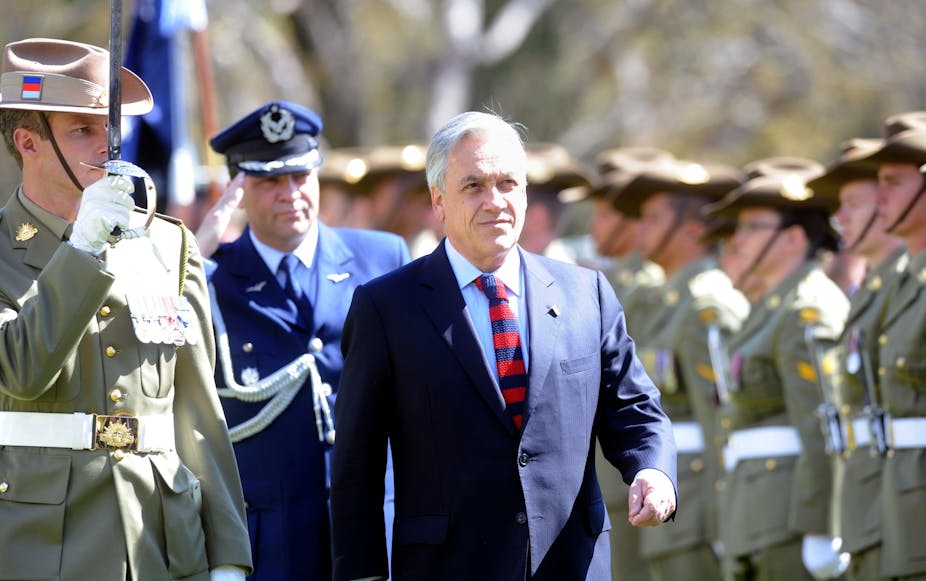Until now, we have paid little attention to Latin America. Our mainstream media hardly mentions the region or is full of misconceptions and stereotypes.
But times are changing. Globalisation and technological change have had a tremendous impact on the relations between the Asia-Pacific region and Latin America, a trend gradually engulfing Australia too.
Increasing numbers of Australians are discovering Latin America offers sustained growth and opportunities in business, political, social and cultural sectors.
Meanwhile Latin Americans are studying, working or settling in Australia in greater numbers. The 2011 census figures shows more than 100,000 first generation Latin Americans now call Australia home.
Latin America is also benefitting greatly from the changing global economic order, with Asia - and particularly China - fast replacing the United States in trade with the region. By 2009, China already surpassed the United States as Brazil’s largest trading partner.
Largely on the back of this Asian resources trade, Latin America is a region of rising economic influence. Over the past decade, Brazil has emerged as one of the world’s top four newly advanced economies predicted to become economic superpowers by 2050 (the so-called BRICs). Its hosting of the next World Cup and Olympic Games will raise its global profile even further.
Chile, Mexico and Peru (all members of APEC), along with Argentina and Colombia are growing powers with increasing prominence in the international arena.
Yet, the rise of Latin America, its multiple connections with the Asia-Pacific Rim (including Australia) and its ever-increasing influence are still overlooked. Excessive attention is placed on the implications of an Asian Century for North America and Europe, while stereotypes about Latin America lead to a lack of awareness of existing and prospective opportunities with the region.
Meanwhile the region is becoming increasingly relevant to Australia both as economic competitor – especially in the supply of raw commodities – and as a land of great opportunities.
Australia therefore needs to approach Latin America with a new mindset. Within the university sector there is a clear awareness of this need and the devotion of considerable energy to address it.
A landmark event earlier this month, The Melbourne Latin America Dialogue drew leading figures of Australia-Latin America relations from university, business, government and diplomatic sectors to discuss better links in education, mining, diplomacy, foreign aid, agriculture and food security
Many Australian universities including RMIT and La Trobe, are strengthening their efforts in increasing student mobility from and to Latin America, by signing agreements for academic exchanges and promoting research collaborations.
The Council on Australia Latin America Relations (COALAR) has commissioned a study on Australian strategic relations with Latin America which is expected to be published by December.
Increasingly more Australian universities are offering Latin American studies and educating postgraduate students with a focus on the region.
In addition, more Australian companies are engaging in the region, particularly our mining companies. In return, firms such as Brazil’s meat production giant JBS and Mexico’s Mission Foods have entered our market.
A recent expansion of diplomatic ties has included the creation of an Australian Trade Commission office in Bogota, Colombia. Prime Minister Julia Gillard visited Brazil this year - the first visit to the country by an Australian Prime Minister - resulting in an agreement to strengthen relations between the two nations via strategic partnership.
Latin American governments have also demonstrated keen interest in Australia, with Chile’s president Sebastian Pinera’s recent visit.
However, much remains to be done. Within academia, we need more collaborative research between Australian and Latin American universities in all relevant disciplines, involving faculty and students alike.
Moreover, teaching Spanish and Portuguese at school and university levels should be seen as a priority. It is expected the already sizable community of Latin American origin will continue growing in the coming decades, with an evident strategic need for a well-educated cadre of Australian citizens speaking these languages.
On the other hand, as mentioned here, Australia needs to explore creative ways of bringing more Latin American students to our shores.
Providing special opportunities to enable Indigenous and disadvantaged Latin American students to access to study opportunities in Australia, undertaking joint research projects in national priority areas in partnership with industry, and supporting growth of higher education and VET in marginalised and less developed regions, are just some measures needed.
Institutions wanting to engage with Latin America can benefit from staff with Spanish/Portuguese language skills and familiarity with the region’s social, cultural, political context; staff training in these areas would strengthen possibilities for engagement.
The efforts mentioned above suggest that we are on the doorstep of a new era in relations with Latin America.
Over time, these efforts will result in more movement and interaction between people of our regions and this, in turn, will bring about a cultural shift:
In the years to come, Australians will leave behind the outdated conceptions of Latin America as a distant outpost, an exotic faraway place, a land of soccer, carnival, siestas and fiestas, or even as a single coherent region (we still have to fill outdated immigration cards that include in the category of “South America” all countries from Mexico to Argentina).
Instead, we will come to have more grounded and nuanced understandings of the social, political, linguistic and cultural diversity of the region, from Rio Grande to Patagonia. A thriving Australian community with strong interests in the region is already cooperating and working hard with this goal in mind.

